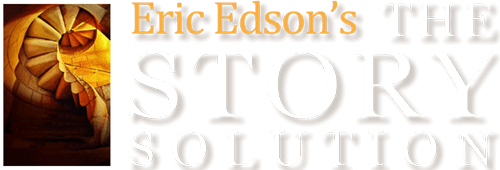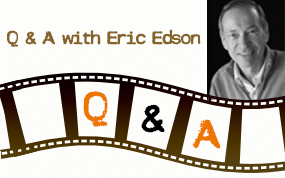
Erica Byrne
SCREEN AND TV WRITER
“Demystifies storytelling and lays out a clear path to a Hollywood sale”

Jessica Davis Stein
NOVELIST
“Like discovering a new continent. May well be the best cure for writer’s block ever written”
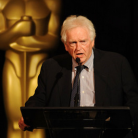
Tom Rickman
ACADEMY AWARD-NOMINATED SCREENWRITER
“Remarkable. Strikes off into new territory”

Michael Wiese
PUBLISHER & FILM DIRECTOR
“A brilliant presentation…tremendously valuable to writers everywhere”

Michael Peretzian
SENIOR VP WILLIAM MORRIS AGENCY
“Laser-sharp insight. I could not imagine a more thoughtful and thorough analysis of screenwriting”

Steve White
PRESIDENT OF FEATURE FILMS, NEW WORLD ENTERTAINMENT
“The Rosetta Stone for translating story ideas into powerful screenplays”
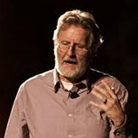
Michael Hauge
BEST SELLING AUTHOR, SCRIPT CONSULTANT
“Brilliant. Invaluable for writers and filmmakers. This book will change the way screenwriting is taught”

Robert Cartland
PRO SERIES PROFESSIONAL SCREENWRITING PROGRAM
“The insight regarding character, dialog and story are elegantly presented. The 23 actions paradigm provides a wonderfully clear blueprint for storytelling”

Jen Grisanti
STORY/CAREER CONSULTANT GRISANTI CONSULTING, INC
“Quenches your thirst to understand the story and how to make yours work better on every level. A must-read for screenwriters”
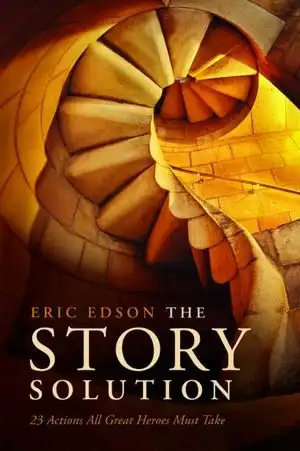
THE STORY SOLUTION is a powerful new book on screenwriting by Eric Edson that will help make your screenplay writing more enjoyable, effective and successful. This book offers a completely unique approach to writing a movie script that will keep producers, agents and audiences glued to their chairs. If you are seeking advice on writing a screenplay or looking for screenwriting tips, Eric Edson’s THE STORY SOLUTION is one of the best screenwriting books to consider for your library. Accomplished screenplay writer and university professor Eric Edson reveals the 23 actions used in every successful movie to create dynamic, three-dimensional heroes while linking together all parts of a captivating screenplay from first page to last. This book offers both new screenplay writers and scriptwriting professionals the tools necessary to construct a forceful emotional ride in their storytelling. Writing screenplays is not easy. Eric’s paradigm of HERO GOAL SEQUENCES has raised his book into Amazon’s top list of the best books on screenwriting. Clear and fun to read, THE STORY SOLUTION brings to light an innovative way to insure effective plotlines for both screenplays and novels.
Buy a copy at Amazon.com or MWP.com
Eric Edson backs up his Story Solution with deep and wide research of all the movies you've seen and many others. If you want to understand what makes a box office hit, read this book. I read it twice and took notes and it changed everything. Now I know why I enjoy some movies and could care less about others.
Wonderful, helpful book on screenwriting. This book has helped me immensely in writing my own screenplay, which I quickly realized I was lost in and I needed some education on it. I took a lot of notes while reading The Story Solution, which is so practical in its guide for writing. It doesn't teach a formula for stories, but it very plainly says, "A hero must have this goal, then another, then these complications must happen," etc., and there are virtually infinite variations for that to keep the audience's interest. That to me makes it more helpful than more abstract books about screenwriting (though those can be very helpful, too). And it's a fun and exciting read. I loved it and will probably re-read it several times.
An absolute must for writers who utilize and respect the use of an outline. These tools can be used at the micro and macro level which I really enjoy. You can get some help with a brief outline, or use it to create an extremely detailed point-by-point plot with character arcs built-in and ready to go. A great buy!
I have learned new tricks for screenwriting. The formula for 23 actions for heroes are spot on. Attended a seminar but only had time to run through a few of these actions. This is why I bought the book.
I just finished writing a screenplay using Eric Edson's Story Solution method. It is the best one I've turned out yet! My hero is active and the story really moves well. This book is a must read for the novice and experienced writer or reviewer who can't figure out what's wrong with a movie that they should love but don't. I highly recommend it.
Makes sense. Have learned a lot as a writer from this.
I've had the honor of being taught in person by this man, and I'm so happy that this book has finally been released. The techniques and lessons that you will learn from this book are very valuable to any writer. Whether you're trying to break on the scene or you're an already established writer, I will guarantee that you'll learn something that you didn't know before. GREAT READ!!!
Good book
Eric Edson was the best screenwriting teacher I had while at CSUN. His book is a reflection of that. Thanks for everything you taught me, Eric.
Really opened up the inner workings of narrative storytelling—I’m hooked. Now, I’m off to work with this little volume laying open while I type!
This book starts off some great how-tos I found very useful, and then it goes into structure, and I made notes on the entire book. I first read it, and then went back and wrote up notes on what I was learning. Wonderful book.
I've read about a dozen books like this over the years but this one is the one that has helped me the most. Most books books cover plot, characters, scenes, etc. But no one talk about the order and placement and how you know when you are ready to move on to the next scene. The way Professor Edson writes it-gives you concrete things to work with. I remember when I took a cooking class the chef was very specific on the order to place the ingredigents and the grouping of certain ingredients together. The chef told us to watch for a certain texture in the food. That was signal that it was ready to add more ingredients. This book is the same way. No more driving around in the dark trying out this or that. I love how the Professor says if you your hero doesn't have 4 out of the 6 character traits. Go back and try again. I love that. Its like if you are going to bake bread and you don't put the right amount of yeast along with just the right around of moisture in the bread-it won't come out right and you can't blame the oven! Professor Ed edson is the William Vennard of screen writing! He teaches you the fundamentals so that you have a solid foundation to stand on. The brilliant soprano Renee Fleming always stressed the importance of knowing the fundamentals of how the voice produces sound so that you aren't a victim to the whims of your body, mental stress or environment. The same here-knowing the fundamentals of story telling and all the ingredients that goes into making a great story will give you the freedom and confidence to create your own original story regardless of the whims of the the studio executives or market. Solid story telling will stand time and time again. Thanks professor for this wonderful and much needed book! I am now ready to pull those dusty unfinished screenplays and novels out of the drawers! I feel less frustrated because now I know all the ingredients to the recipes and know when to add them in the pot and how long to cook it!! Run don't walk to get this book. You will be thanking me!
Eric Edson's method is great for writing a heart-racing, fast-paced action/thriller. It won't work for every genre, but think "The Sons of Katie Elder" or "Back to the Future" type scripts. The five top books in my script writer's tool box is this one, Save the Cat by Blake Snyder, Story by Mckee, Screenwriter's Bible by David Trottier and Anatomy of a Premise Line by Jeff Lyons. All different approaches for the same or different genres and types of scripts.
It has always been for me that by reading books such as "Story Solution" I gain a better understanding of myself and others. This book, more than any other, is helping me to write my screenplay. It is definitely required reading if your going to write any story.
packed with useful information
I have been exposed to THE STORY SOLUTION both as a graduate student at California State University Northridge and as adjunct faculty at Boston College. In both cases, I have seen the books influence on the story process. As a screenwriter, I have long struggled with building rising plot actionlines that create powerful script conflict - especially in Act Two. Eric Edson's new "Hero Goal Sequences" story paradigm provides me with a powerful tool to bridge that long - and sometimes lonely - seventy page gap between a solid Act One and a great ending. As an educator responsible for guiding students through their first attempt at writing a feature-length script, I witnessed the students' educational arc go from initial Hero Goal Sequence skepticism to copies of their STORY SOLUTION books highlighted and dog-eared and in constant use as a reference source. The end result has been enormously improved student screenplays. THE STORY SOLUTION is now required reading for the Boston College Film Studies program. It's a valuable tool, and the students are both delighted and grateful to have it. Ned O'Neill Screenwriter/Educator/Story Analyst
Eric Edson's book does a masterful job of taking a difficult and complex subject like story structure and breaks it down into an easy to comprehend rubric. I especially love the plethora of examples from past films showing his "Hero Goal Sequences" at work. Sure, Syd Field can tell you roughly where your act breaks could be in your script, but Edson's book delves deeper into the nitty-gritty of the path your hero needs to take to achieve their goal, and he does it wonderfully.
I've never reviewed anything on Amazon, but after reading this book, I felt compelled to do so. As an aspiring screenwriter, I searched high and low for the perfect book to guide me on my artistic journey. Needless to say, my shelves are full of numerous screenwriting books and materials. Although there are a few good books out there, most of them say the same thing... write in a three act structure, develop meaningful characters, and keep the audience entertained. Of course, all of this information is useful, but no other book will break down your story into 23 specific parts and walk you through each part in complete clarity like "The Story Solution" by Eric Edson. The good news is that my sense of story dramatically improved after reading this book. The bad news is that I wasted a lot of time and money searching for it. Save yourself the hassle and don't waste money on other screenwriting books (unless you're rich and can afford it). This is the only book you'll need!
Excellent book for writers.
What kind of a person actually dissects successful movies to identify their underlying structure? I'd say a scientist, which is an unusual way to characterize an artist. Yet, in my opinion, that's what Professor Edson certainly is. I thoroughly enjoyed his book and will carefully study it over the coming months to consider ways to improve scripts already written...and to outline stories yet to hit the page. This is a quite masterful work of art and science...and I'm serious about wanting to meet this author some day!
This is both a how-to guide and an I depth analysis of many blockbuster motion pictures. The 23 steps still follows classic 3 act structure with buildup to the midpoint and climax, so if you've read a lot of writing guides you may find there's not a whole lot that's new. But I've gotten a lot out of the simplistic way of looking at plot and logic in story telling. Eric Edson is an academic but doesn't write in academese or metaphor, just simple and clear descriptions and examples right out of mainstream movies.
We've all said some variation of the following while watching a crappy movie: "I can write a movie WAY better than this!" Admit it, you have. But have you ever actually tried to sit down and write a 110 page screenplay that makes the reader stay focused from start to finish and by the end they are begging you to find a way to make your script into a movie? Probably not. The reason isn't that your idea sucks, more than likely it's because your story lacks a sense of focus, depth, and momentum. We've all seen movies that lose out interest and even make us leave the theater wondering why anyone wasted their time and money to bring what you just saw to the big screen. Sometimes it's the studio making a movie ultimately suck; but a majority of the time it all goes back to the fundamentals of story. A lot of books - and I mean A LOT of books - have been written about screenwriting. Syd Field, Robert McKee, John Truby, Blake Snyder, Linda Seger, and host of others have mined the mysterious fields of the screenplay in order to tell new and experienced writers the perfect formula for writing a selling script. While these books do their best to make simplify a very complex process, they often become caught up in their own rhetoric and make the new writer so self-aware of rules, formulas, formats, charts and graphs that they freeze and give up without writing a word. So how do you go from frozen in time with your fingers poised over the keys to actually writing and completing a draft of a screenplay? The answer lies in Eric Edson's The Story Solution. This book breaks each aspect of a screenplay down into bite-size pieces that enable the writer to carefully construct their story and have it fully formed before they ever start to write in script format. What I liked best about the book was that it was very conversational. You never feel as if Edson is speaking down to you like some masterful oracle who knows more than you. He uses current films to exemplify his points and he does something other screenwriting books rarely do: he actually has examples of films that DIDN'T work and explains why. While it's nice to learn about The Godfather and why it's a well-structured film, it's also nice to see why other films don't have the amount of story or other aspects needed in order to make them a commercial success. And it makes sense that a film that has a solid story, strong hero, and even stronger villain can generate plenty of success at the box office. Edson shows the reader how to create a protagonist (hero) that audiences will like, how to make that hero change over the course of the film, and what types of characters can be used to help the hero along his journey. I really liked his emphasis on the villain and his explanations as to why the antagonist is so important and instrumental to the overall structure and development of the story and its hero. After a general overview of screenplay/story structure, we get into the meat and potatoes of Edson's genius: Hero Goal Sequences. He posits that each well-written screenplay contains 23 of these sequences that help guide your hero and the audiences through the course of the story. How exactly does it work? Does it really work on any commercially successful film? Edson not only explains in great detail how it works but also uses more than enough examples from commercially successful movies to prove his point. And you know what? It actually works! Each chapter is filled with exercises that allow you to try out Edson's methodology before you even begin the oftentimes harrowing journey into writing an actual script. Once you gain the confidence needed to go forward and take those first few steps you'll quickly come to realize that Edson's approach is an excellent guide to making your story come alive. Not only is the book an ideal must-read for screenwriters and novelists, but it's also a great book for those who just love and enjoy film. I learned a lot about story structure and character that has since made me a more critical thinker when it comes to watching films. Being able to identify and analyze a movie on a deeper level is something that this book enables you to do and in turn makes you a participant in your viewing experience. The Story Solution is a fantastic and entertaining read, a solid instructional tool, and a great way to delve deeper into the world of screenwriting and film. I highly recommend it.
After reading a variety of "How-To" books on screenwriting, I thought I knew a lot about screen story. I didn't. This is the only book that will walk you through the specific steps your hero must take in order for you to create a successful Hollywood script!
This is a book every screenwriter should keep nearby when working on a script. The analogy of screenplay to myth is both helpful and illuminating; it reminds me of Neil Gaiman's illustrated children's book, Instructions, which symbolizes through mythical figures the journey every hero must take in a well-told story. It also echoes Joseph Campbell's Hero of a Thousand Faces, but gives closer inspection to the individual steps of the hero's journey in a contemporary context. It's impossible to look at movies the same way now; I see these 23 steps in all sorts of films (and not just the ones covered in the book). Already I've started incorporating this paradigm into my own writing process; not only have I seen improvements in the strength of my story structure, but all of my characters (let alone the heroes) have more depth. My writing looks and feels more professional, and I'm more confident about achieving success as a screenwriter and bringing evocative, compelling stories to the screen.
Mr Edson theory about screenplay structure is one of the most important tools every screenplay writer should know, very simple to understand. I bought his book and watched all his YOUTUBE Film Courage virtual classes and personal interviews; he is one of the best teachers I have ever had.
Excellent explicit guide to character development and one of the clearest distillations of structure that I have read, with examples from well known films
Another helpful angle on screenwriting. I found it helpful for focusing what happens between the well-known way stations. Worth the read.
This book will change the way you view character, action, and theme. It's clear, precise, and easy to follow. The elements shared within the pages of this book are priceless - if applied correctly, you'll be well on your way to becoming an excellent screenwriter. I have used his paradigm, applied it to a script I'm currently working on, and have seen the difference -- it's night and day. I suggest you purchase this book straightaway - don't think about it, don't pass go, just buy it. Study it. Apply it.
Excellent book for keeping your story moving forward and not going off track. Highly recommend this book.
Never before have I read a book about story structure that is THIS BRILLIANT. I've read books that encourage authors to write down a character's likes and dislikes, behavioural nuances, as well as other such hogwash. These books fail to realise that a character liking the colour blue and who flicks their hair when they're nervous DOES NOT make for a compelling character. Advice like this has lead to an abundance of hair-flicking Mary Sue characters who passively wade through their story until they accidentally stumble across The End. Eric distills characters down to their most important function. Reality is, stories shouldn't happen DESPITE the characters- stories should happen BECAUSE of the characters. Eric shows us how to do things right. "23 Actions"... although this book does detail these 23 actions in the latter part of the book, everything before this is also gold. I could never figure out why my dialogue was always so weak. Now I know. If you've ever suffered from a plot that flounders and sags half-way through, or had trouble bringing stories to a proper resolution, or had difficulty writing characters who make things happen, or if you've even suffered from writer's block, I recommend reading this book. The only writers I WOULDN'T recommend this book for are those who 1) are half-way through a book already (because reading this book will make you want to scrap everything and start over again, or 2) are greatly opposed to the idea of planning out your story in advance. This book still leaves the hard work up to the writer. But Eric sets the writer on the correct path. Needless to say, I've applied Eric's advice to my own work, and it's already 100 times stronger for it. I can't believe that following the advice of one book has had such a dramatic effect on the quality of my storytelling.
With STORY SOLUTION, Eric Edson gives 20-23 (no less than, no greater than) steps that your protagonist must make to have a clear, tight, meaningful story. Don't worry, there's plenty of room for creativity; just check any of your favorite movies---they ALL follow these steps in one way or another. ***FOR BEGINNING SCREENWRITERS: Please don't make the same mistake as me in buying over a dozen books on screenwriting. To be honest, there's more than OVER a dozen good books on screenwriting. But, as happened with me, it's easy to get into READING about writing instead of doing what writers do…….write. For this reason, to save you time and money, I strongly recommend purchasing this book AND Inside Story: The Power of The Transformational Arc (by Dara Marks). The two books give you the BIGGEST advantage in avoiding two of the biggest pitfalls: Weak structure (Story Solution) and deep, emotional story that hooks us from the beginning with CHARACTERS that we care about (Inside Story). I don't mean to recommend the additional book as a knock on SS; I just really find that SS does an EXCELLENT job on structure. Inside Story does an EXCELLENT job on THEME, which Marks blends AMAZINGINGLY into story. But, to return to SS: Over 80% of the screenplays that have issues, poor structure and bland protagonists fill that pile. Make it to the next round of that famous screenwriting contest and purchase this book. Once again, a thoroughly enjoyable read. uabdu87@gmail.com
Eric Edson was my professor, and I can testify first hand, because I received notes from this book before it was published. I sat in his classroom and couldn't believe this innovative information that I knew was going to become monstrous once it was revealed to all. He has researched films throughout the years and has found a method in understanding what makes a box office hit, structurally tells you how to do this, in a way that no one yet, even the greats, have fully tapped into. My screenwriting approach will never be the same again. It allows you to find an incredible answer to structure, character, story, everything that makes a script wow the reader, and frees you all at the same time. This book is for all writers, veteran, newcomer, and in between. I personally have benefited in the industry as I have put my projects out there, and I can tell you, this works. It wows. And if you truly follow it, and let it liberate you as a writer, you will fly to places you never thought possible. BUY THIS BOOK!
I'm a professional screenwriter and took Eric Edson's class at UCLA several times when I was working towards my certificate in screenwriting because it was simply the best class in structure I'd ever taken. Each semester we analyzed new movies according to his breakdown and it really clicked for me more than just hearing about 3 acts, or 8 sequences that others teach. Eric Edson's breakdown is precise, accurate, and helped me rewrite every one of my scripts. I've used my notes from his classes all those years ago, and was thrilled to find his book at the UCLA bookstore the other day as it contains all the same class information plus much more. Once again, it is helping me figure out what I need to do to fix my latest scripts. Thank you Professor Edson. One of these days I'll owe you a shout out from the Academy Awards!
Edson has unlocked a code that is universal for dramatic storytelling. There may be those who resist this elixir but for those who are open and imbibe the serum, they will undoubtably be transformed. This book is an absolute masterwork. I consider it THE book on screenwriting because it does the one thing that none of the other scholars do: help the writer organize their story with a universal foundation. Other books will try quick fixes and tricks to give the author plug and play options, or philosophies that aim to steer or inspire a writer. This book does ALL of that at once with this simple solution. The hero goal sequences are imbedded into our psyche and part of our universal consciousness. Edson has uncovered this and we are lucky he has shared it.
This is a MUST READ for anyone out there wondering how to write a good screenplay. In today's world of too many screenplay books to choose from I'll make it easy for you - just read this one. It breaks things down simply and elegantly. There's a reason why some scripts are just okay and some scripts are truly great. This guy teaches you how to write the truly great kind. You will not be disappointed!!
STOP! Save yourself countless wasted hours and don't start writing your screenplay until you've got your 23 Hero Goal sequences firmly in mind! Edson distills the classic screenplay paradigm into a series of steps every hero must take to reach their ultimate goal. This book will keep your narrative on track and accelerating towards an explosive conclusion. Unlike the stacks of novice screenwriting books that cover the same theoretical ground over and over, this book lays down an industry veteran's practical rules for overcoming the real-life screenwriting obstacles we all face.
The insight regarding character, dialog and story foundation are elegantly presented and the 23 actions provides a wonderfully clear blueprint for storytelling. I particularly liked the discussion of Fresh News. Many books and websites tell you that each scene must compel the reader (or viewer) to the next. Your book provides a clear explanation on how to achieve this essential objective. In his seminars, Eric suggests writers should play with words the way a sculptor plays with clay. The Story Solution provides the wire mesh on which to support the clay.
I have a vast array of books on screenwriting... everyone offers the slightly different solution to the three act structure. Each lends a helping hand to lift me out of the hole I've dug for myself. Story Solution is another rung in my story structure library... enjoy
As an aspiring screenwriter, I've struggled with two aspects of the craft most, why do some characters engage us and other don't? Once you have your catalyst and act breaks, where do you go from there? Eric Edson's book is an invaluable solution to get you through the "fog" of figuring these things out for your story. While most screenwriting books only concentrate on the act breaks, Eric covers this and also guides you through everything that happens in between. Learning and knowing these steps really frees one up to concentrate on the story they actually want to tell. In addition, Eric demonstrates character traits all compelling characters exhibit, a great asset to keep your audience or reader engaged in your story. While many screenwriting books give you a compass of sorts, Eric provides a map that will help you avoid the swamps and pitfalls of the dreaded second act. In addition, he'll help you build your protagonist in a way that will keep him/her in the audience's hearts. I had the privilege of learning from some of Eric's graduate classes and The Story Solution in book form is the next best thing. With both classic and contemporary examples to illustrate the solution, I heartily recommend this book for any writer's tool box.
A great book. The book to have for any writer.
I've been working on the first draft of a novel. The scenes have been planned out (and replanned and replanned) and I've been working my way through them, considering the first draft a big brainstorm. I knew there were still structural problems. For example, the events seemed to be out of order as far as their impact and the heroine has been passive. By the time I finished reading this book on structure, the structure of my novel was completely replanned. Now the heroine drives the story rather than reacting to it and the story drives hard toward the climax just like it should. All the hills and valleys are there now. The part about characters was really great, too. This book provides a lot of examples of roles that characters should play, and this part really brought my novel to life. It had people in it, of course, but they weren't assigned specific roles that I understood very well. This book really pushed my WIP to the next level.
This book is ment to be APPLIED. While some books you can simply absorb the necessary information and move on, here it is not the case. The template in Eric's paradigm is ment to be studied and mulled over. Mastery of its content applied to the vast quantities of scripts in identifying there story structure elements. Even if you've already bought into another system of screenwriting structure (a.k.a, John Truby) I would still strongly recommend giving it a chance. Plot is story, it's amazing to see how this system Eric has devised/found applies to so many (if not all good) stories. If you aren't Steven King and can't unbury the treasures of your story, or simply don't have the time. Invest in the formula - it won't be everything you need but it will point you to exactly where you need to be.
In The Story Solution, Eric Edson presents a clear, concise, step-by-step manual that will help you to craft your best screenplay yet. There are A LOT of books out there that claim to make you a better screenwriter. This one actually lives up to its promise. It is a fantastic guide to help you through the herculean task of creating a page-turning, commercially viable screenplay. I highly recommend that you purchase it. You will be thrilled with the results you get.
Unless you're Robert Towne, William Goldman or Paddy Chayefsky, this is a book you absolutely need to understand how stories on the screen are structured and impactive.
This is a book about plotting a decent story, specifically a screenplay (although the technique works equally well with any sort of story). Part One: Laying the Foundation gives the aspiring writer pointers on how to create a sympathetic hero, how to evoke emotions in your audience, and how to create a dynamic story with believable conflict. Part Two: Creating your Characters covers creating characters based on powerful mythic archetypes and writing dialogue that is integral to advancing your story. These first two sections of the book are full of helpful advice. But the next two sections are the real meat of the book: Part Three: Building Story Structure and Part Four: The Power of Hero Goal Sequences. Part Three covers Basic Screen Story Structure and The Character Growth Arc and Part Four covers The Power of Hero Goal Sequences in great detail - in amount of pages Part Four takes up about half the book. Yes, some of the stuff on basic structure has been said before in other books on plotting and screenwriting. But rarely so clearly and what sets "The Story Solution" apart from others is the amount of detail and the number of examples that Mr Edson uses to illustrate his points. For example, Chapter 14 takes the movie "Up" and breaks it down into the Hero Goal Sequences so the student can clearly see all the mechanics at work. Also the way each of the Hero Goal Sequences is broken down into the kind of events that might happen in each and why, with at least two examples from film scripts for each point. For the student this is pure gold. Didn't get the point after one example? Here's another. Can't see how it all fits together? Check out the movie plan of "Up" at the end of the book broken down into its component parts. The student is not left feeling stupid because she can't work out what the author means because Eric Edson doesn't just make a statement without backing it up. He doesn't assume you'll get it - he first tells you the point then shows it to you in action. Like another reviewer elsewhere I was irritated by the registered trademark symbol that occurred after every instance of the phrase "Hero Goal Sequences". It distracted me and was unnecessary. But that was a small thing compared to the usefulness of the book as a whole. Eric Edson knows his stuff and, what's more to the point, is great at communicating that to an audience. I recommend this book highly for anyone who wants to become a better writer.
Whether you're a novice, or seasoned professional, "The Story Solution: 23 Actions All Great Heroes Must Take" is a must have in your arsenal. Easy to understand, full of examples, and guidance from an established juggernaut in the industry. I highly recommend this book...no, this treasure.
I've read a lot of books on writing. Story Solution is definitely one you want to consider adding to your library. While, yes, it might lead you into the dangerous realms of formulaic writing; it is packed full of integral writing advice. All the points you need to consider, as a writer of novels or screenplays. Story Solution is easy to understand. It delivers on its promise of offering a solution to any writing problem by showing you how to structure a story that works. All the necessary parts of a story you NEED to consider are touched upon here. Dozens of movie plots are used as examples. If nothing, the book is an interesting examination of movie plots. Put it this way: if you follow this book's advice, you'll probably start pumping out stories people would want to read pretty quickly. Stories that make sense, follow a cohesive structure, and present interesting characters. Whether you read this book or not, check out these excellent guides for writers: 1) Lessons from a Lifetime of Writing by David Morrell (Newest edition has a slightly different title.) 2) On Writing by Stephen King 3) Self-Editing for Fiction Writers 3) Outlining Your Novel by Weiland 4) Scene & Structure by Bickham 5) Any of Chuck Weltig's books on writing 6) Anne Rice's advice on writing from her Youtube page These should get your brain-engine overheating. Enjoy. 🙂
Heroes. They drive your story. Whether their name is Shrek, Luke Skywalker or George Bailey - they are the characters the audience relates to, understands and becomes as the story progresses. You cannot cut your hero short. They MUST accomplish their goals. Eric Edson does a fantastic job of going over the basics of screenwriting (structure, dialogue, arc, heroes v. villains) before diving into the main concept of his book: The Hero Goal Sequence (c). This is where this book takes off. Diving headlong into the reality of heroes, Mr. Edson explores the core 23 Steps your hero MUST take to accomplish their goal. Using the Hero Goal Sequence (c) paradigm - Mr. Edson defines for the reader/writer the steps it will take for your hero to accomplish his/her goal. He then breaks them down per act, giving the reader/writer a clear understanding of what must happen when and where and for how long. In all the books I've read, I've not seen this definition taken to the lengths that Mr. Edson takes it. And as much the definition may cause others to pause - he gives plenty of examples to hold up his side of the argument. That your hero MUST take these steps to accomplish their goal(s), thus creating a story that resonates and has impact beyond just the final credits. And this is where the book excels. Using these examples as concrete evidence, it's hard to argue the points when he makes them so clearly. Then, taking it one step beyond, he uses exercises to help the reader/writer to really understand the concepts and take their hero(es) to another level. Many books on screenwriting will gloss over, or just lightly touch, on the hero's journey - Eric Edson dives in with a depth rarely seen. The Story Solution takes apart the journey with thoughtful insight and relevance - you'll be amazed at what you find.
I have read over 200+ books on screenwriting, a most difficult craft to master (I am still on this long journey's path!), most such books rehash the same old same old. Regardless of whatever how-to book(s) on screenwriting you have read so far, get a copy of this book as soon as you can and read it cover to cover. Twice. Three times. Aristotle's three acts, and the typical 8 or so plot points one learns from Syd Field, Michael Hauge, and others is fine for some fundamentals. Then there are a few books that even teach structuring a film minute by minute (literally, as in 120 story beats, a book I read recently). This approach, 23 sequences or beats, seems like the best yet. I already created a template with the 23 actions each hero must take, plugged in my outlined beats for a supernatural thriller I am currently writing, and it worked perfectly. Kudos to the author, Eric Edson, who obviously knows the craft-- he has written many feature screenplays, and also is a professor of screenwriting at UCLA-- who better to get down to business and share wisdom on the craft of proper story development.
I have been writing using Prof. Edson's theories (as contained in this long-awaited book) for the past 3 years. I can honestly say that it brought my writing to an entirely new level. I used his methodology to craft the story for my recently-released feature film, "

